Pôle culturel de Chambly
In October 2016, the project submitted by Atelier TAG and Jodoin Lamarre Pratte architectes in consortium was selected as part of the architectural competition for the design of the Pôle du savoir, d'histoire et de la culture de la Ville de Chambly (Pôle culturel de Chambly). Inaugurated in October 2019, this mobilizing project allows the city of Chambly to shine in the province in terms of culture and the arts. Affirming a unique presence on the Boulevard de Périgny in the city's heritage sector, the 3,250 m² building houses two main programs: a 1,400 m² library and a 1,185 m² multipurpose room.
Location
Partners
Atelier TAG
Scale
3 250 m² / 15,9 M$
Completion
2016 — 2019
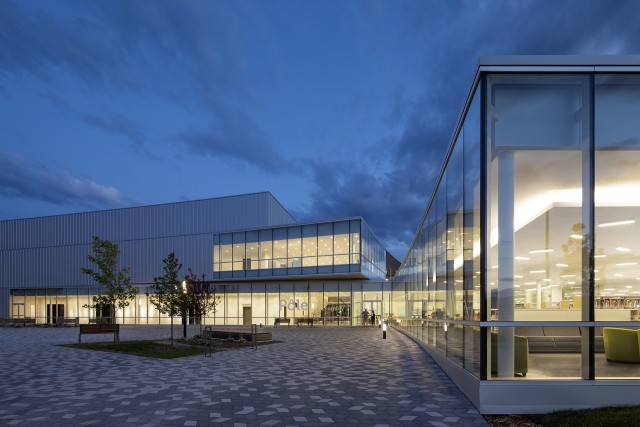

The architectural composition of the building, characterized by the slight undulation of three superimposed volumes whose plasticity navigates between opacity and transparency, is inspired by its nautical environment, characterized by the Locks, the Canal and the Chambly Basin. Through its overhangs and cladding, the project's architecture also refers to the covered galleries and "Canadian-style sheet metal" roofs, elements of the built heritage of Old Chambly. The whole forms an "L" shaped geometry that opens onto the Grande Place, with the nautical spectacle of the canal as a backdrop.
The dichotomy of the program, which dictated both an open space bathed in natural light for a library and an opaque box for an auditorium, led to a clear division of the spaces linked by a large hall.
"Through its composition in staggered layers, the massing of this new building echoes the topography of the south shore of the St. Lawrence and integrates into the suburban landscape without disavowing it. The drawings reflect a judicious reflection on the uses, which they foresee evolving over the seasons in order to accommodate a changing program of cultural, sports and community activities and events. Despite a limited budget, the project manages to infuse character and vitality into its environment, envisioned as a true ecosystem."
Award of Excellence in Architecture of the Ordre des architectes du Québec 2021

The library is located on the second floor of the building and is entirely glazed. This single-storey occupancy promotes a highly democratic and flexible space. All the collections are grouped together in one space, an economical and functional solution that has delighted librarians. Flexibility also plays a major role in the design of the center: only 8 columns divide the library space. This free layout combined with the choice of modular and mobile furniture makes it easy to transform the space according to the changing needs of users —creating a digital bar, Fab labs or even a training room. This concept supports the new role of the 21st century library, combining printed materials with the latest technologies.

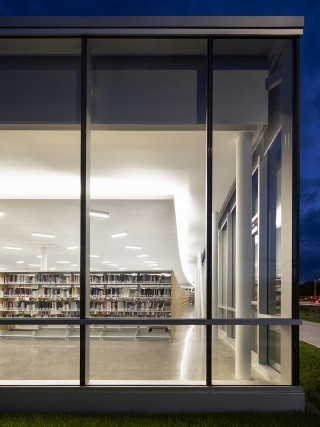
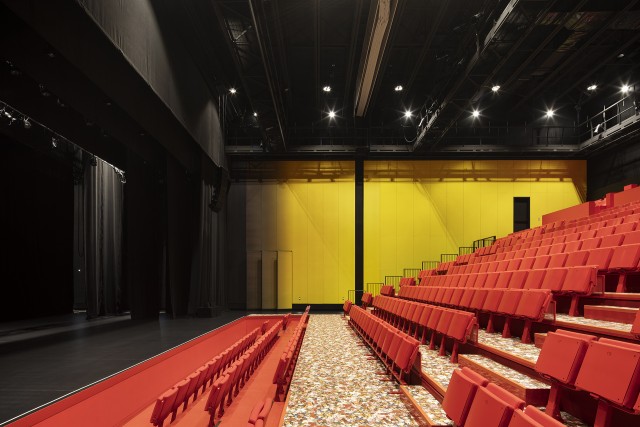
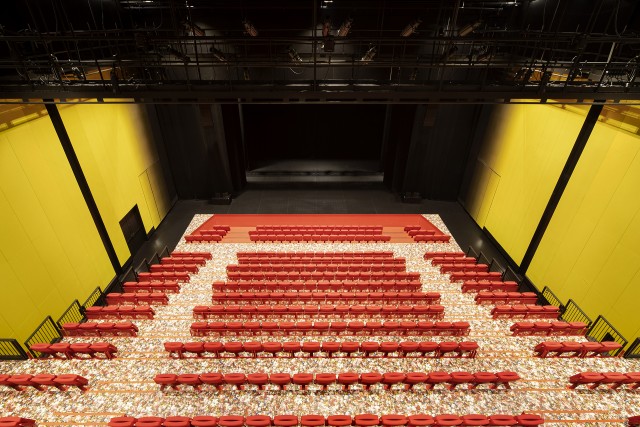
The multifunction room can be adapted to a wide variety of functions, mainly through the installation of removable bleachers that offer great flexibility of use —Italian-style room, meeting spaces, seminars, receptions. When the room is not used for events and performances, it is an ideal meeting and conference venue for local organizations and can also be used for summer camps.
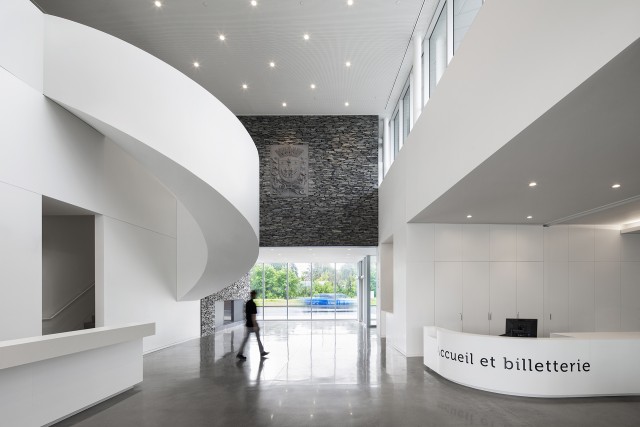
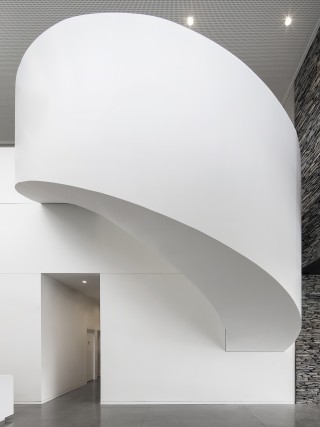
The large lobby, which divides the library from the multi-purpose room and leads to the mezzanine, offers visitors both additional space for reading and working, and a reception area that can accommodate events such as yoga classes, conferences, and social gatherings. An adjacent terrace and overhangs above the library's main entrance offer a view of the Chambly Canal and the historic district.
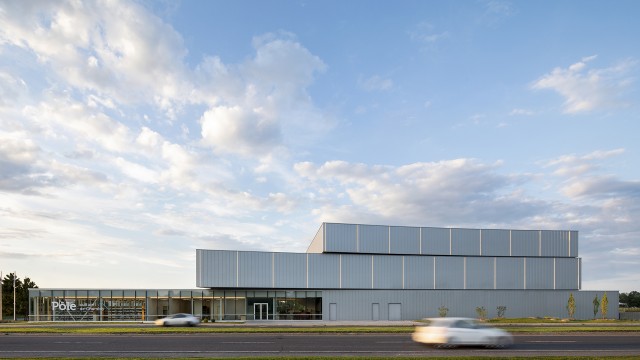
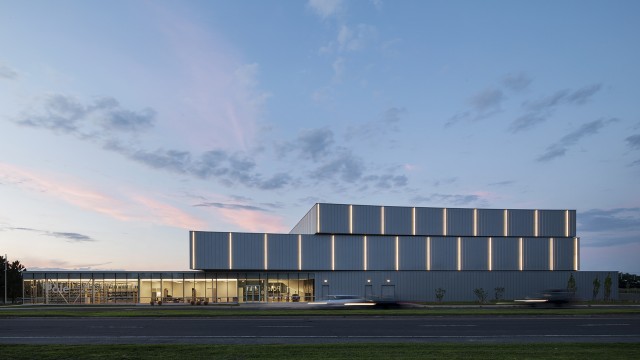
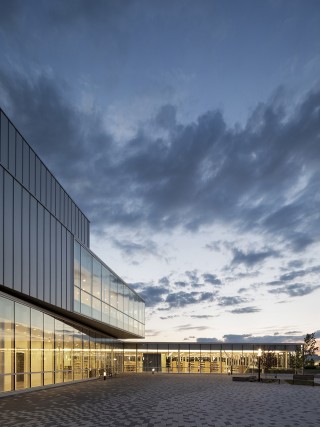
Locally available and extremely durable materials such as galvanized steel profiles manufactured in Quebec, whose performance were studied in a life-cycle cost analysis, were favoured. The lightness and reflective properties of the metal cladding underline the movement generated by the curves of the envelope, creating an energetic and festive atmosphere.
Our firm contributed to the development of the entire project in consortium with Atelier TAG, who acted as lead designer. Precedents and site studies were carried out as a team in order to propose a footprint adapted to the site. Our firm was responsible for developing the basic principles of the building's two main functions, namely the multifunctional room and the library. Our team was also responsible for the execution, the search for materials, the cost estimate, the integration of mobile furniture, the application of existing codes and standards, and the construction site supervision. The integration of the acoustician's recommendations was an important part of the work, particularly in the public hall and in the multifunctional room, in order to generate pleasant and functional spaces of high architectural quality.